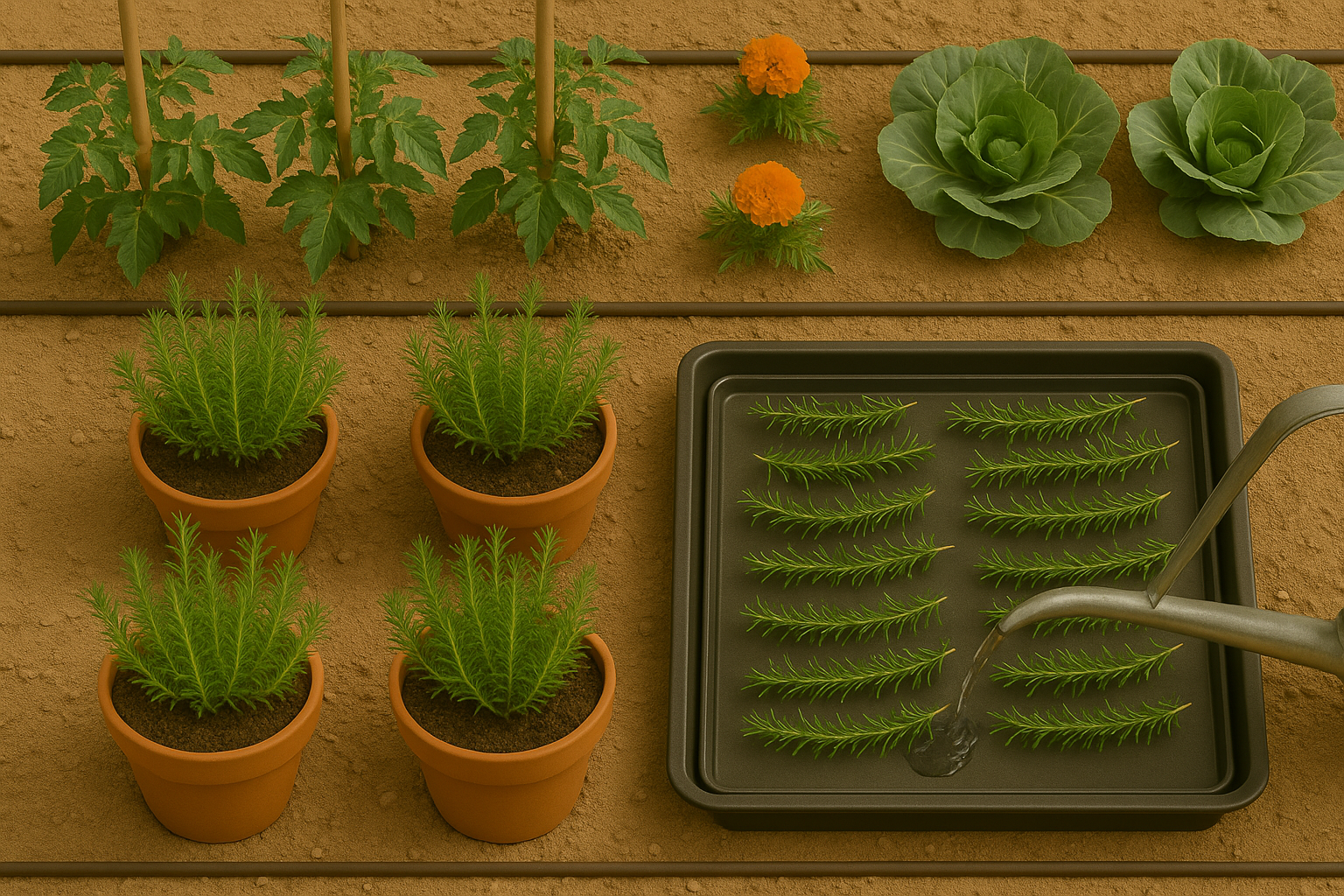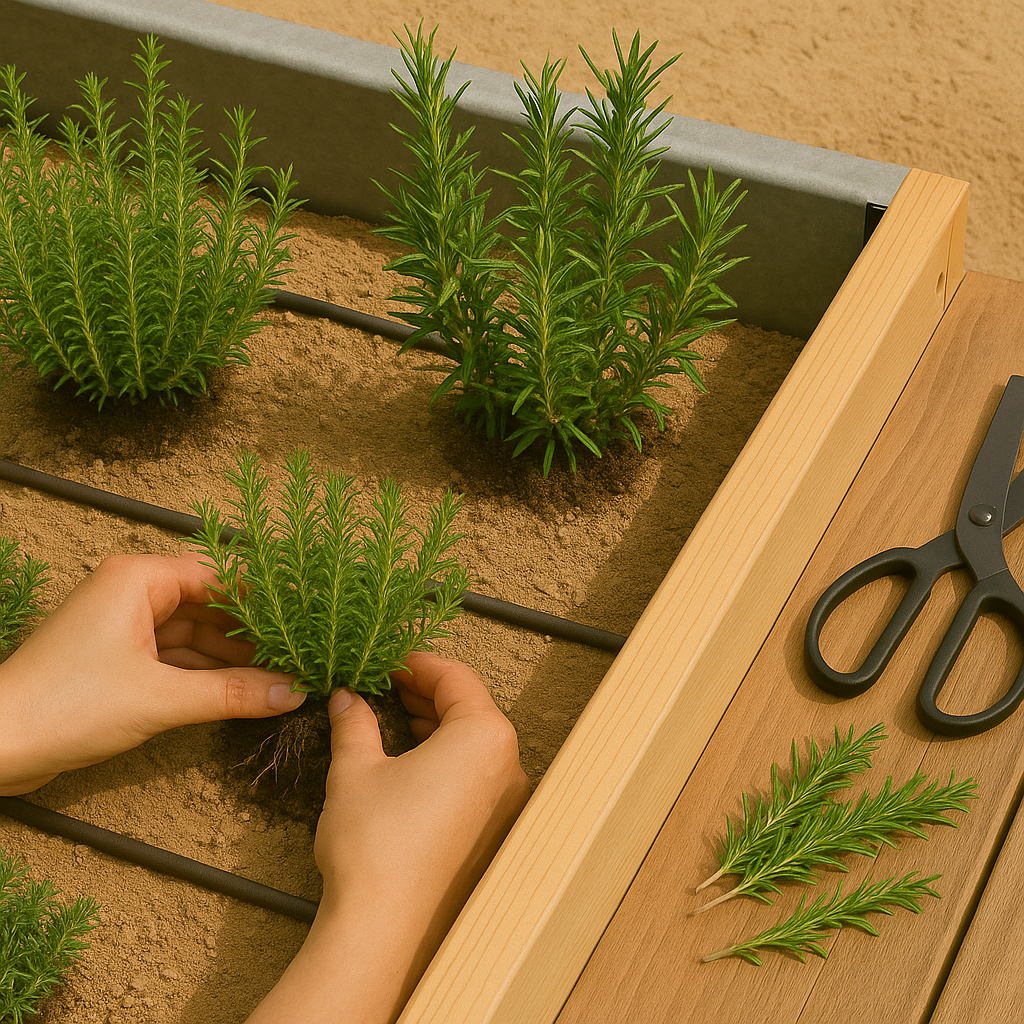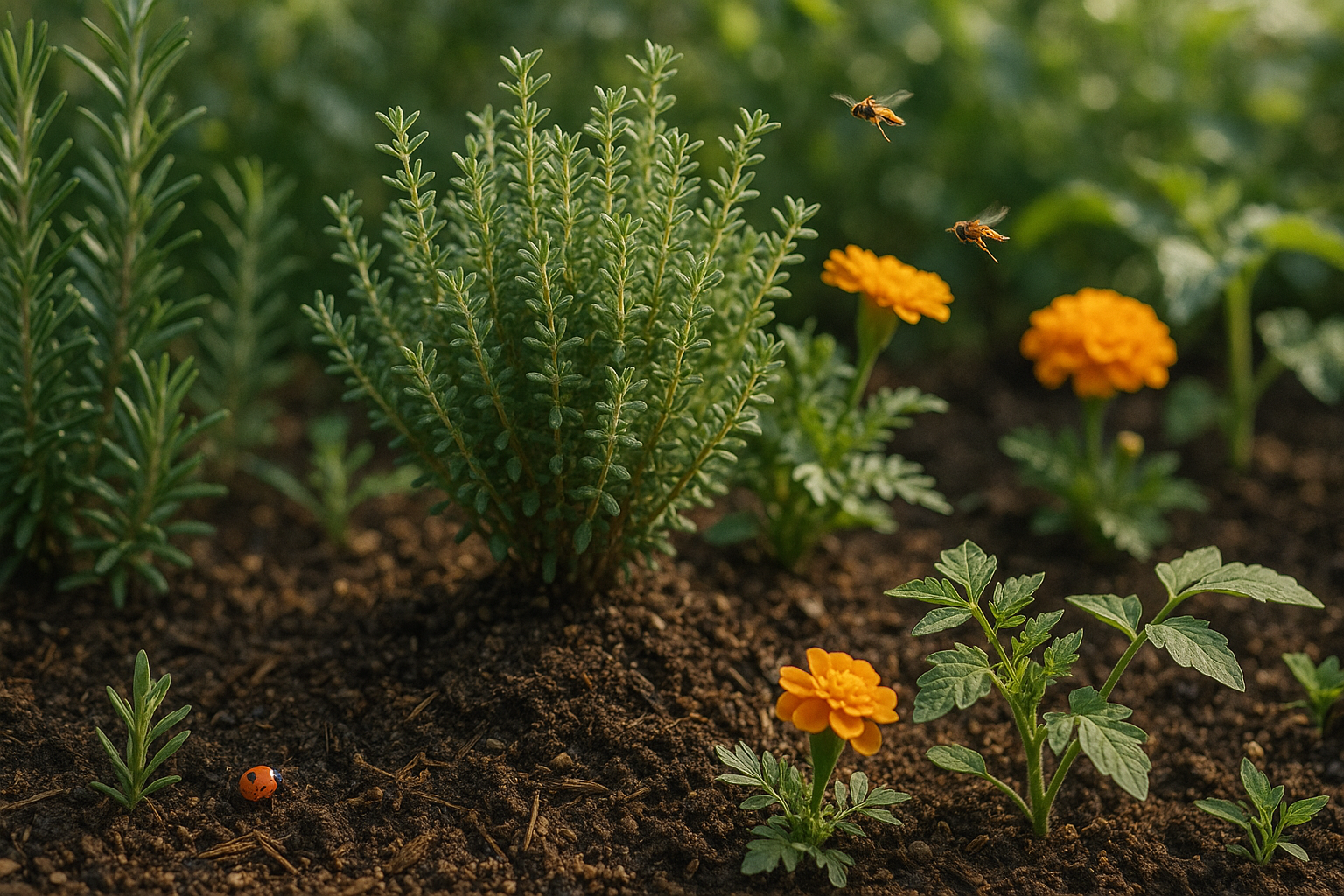Introduction to Companion Planting with Thyme
Thyme companion plants can transform your herb garden, creating a thriving ecosystem where every plant benefits from its neighbors. Companion planting—pairing specific plants together for mutual benefit—has been a cornerstone of traditional gardening for centuries. By understanding each plant’s unique needs and natural abilities, gardeners can boost growth, deter pests, and enhance flavors, all without chemicals.
Thyme, with its aromatic, low-growing foliage and resilience, is a staple in many gardens, attracting pollinators and repelling unwanted insects naturally. However, even hardy herbs like thyme can benefit from the right plant partners. Well-chosen companions help thyme stay healthy, maximize harvest, and even amplify the scents and flavors you love.
In this article, you’ll discover which vegetables, flowers, and herbs make the best thyme companion plants, along with practical tips for planting, spacing, and garden layout. You’ll also learn which plants to avoid near thyme—and why—ensuring you get the most out of your garden space.
Whether you’re a seasoned gardener or just starting out, you’ll find easy examples, actionable advice, and a fresh perspective on how companion planting can make your thyme (and your whole garden) flourish.
Benefits of Companion Planting Thyme
Companion planting with thyme offers more than just aesthetic appeal—it’s a natural way to boost your garden’s biodiversity and resilience. Thyme’s aromatic leaves release essential oils that deter common pests like cabbage worms, whiteflies, and tomato hornworms, meaning fewer chemicals and less manual pest control for you.
This aromatic presence also attracts pollinators and beneficial insects, such as hoverflies and predatory wasps, which help keep harmful pests in check. When planted near crops like tomatoes, eggplants, strawberries, or cabbages, thyme’s low-growing mat provides ground cover, conserving soil moisture and preventing weed growth—making your garden more efficient and less labor-intensive.
At the same time, this proximity fosters mutual benefits: thyme can subtly enhance the flavor of neighboring vegetables and fruits thanks to the transfer of aromatic compounds, while thriving on nutrients released by nearby decomposing plant matter.
For gardeners aiming to improve soil health, thyme’s dense root system helps stabilize soil and prevent erosion, all while requiring little water itself. By integrating thyme into your companion planting strategy, you’re not only creating a healthier, more resilient garden ecosystem but also reducing the need for synthetic inputs and ongoing maintenance.
Best Companion Plants for Thyme

Thyme is a versatile and hardy herb that thrives alongside a variety of vegetables, herbs, and flowers, making it an excellent choice for companion planting in both large garden beds and small urban plots. Vegetables like tomatoes, eggplants, cabbage, and strawberries are classic partners for thyme because they share similar light and soil preferences—namely, full sun and well-draining soil.
Thyme’s low-growing nature makes it a perfect groundcover, suppressing weeds and conserving moisture around the roots of taller veggies. Plus, its aromatic oils naturally repel common pests such as cabbage worms, whiteflies, and aphids, providing eco-friendly protection to its neighboring plants without chemical sprays.
Alongside vegetables, thyme pairs well with herbs like rosemary, sage, and lavender; all thrive in lean, sandy soils and sunny spots, and together they deter larger pests like deer and rabbits. For a splash of color and further pest control, include flowers such as marigolds and nasturtiums—marigolds help drive away nematodes and aphids, while nasturtiums attract beneficial pollinators.
When planning your garden layout, try planting thyme as a border around tomato or eggplant beds to create a living mulch that discourages pests. Alternatively, intersperse thyme clusters among cabbage rows to mask the scent from cabbage moths. If space is limited, a raised bed with one section for strawberries and thyme, another for lavender and marigolds, and a third for tomatoes, sage, and rosemary allows each plant enough room while maximizing their mutual benefits.
Whether you’re gardening in the ground or in containers, combining thyme with these complementary plants can lead to a healthier, more productive, and visually pleasing garden space.
What NOT to Plant with Thyme
When planning your herb garden, it’s important to keep thyme away from certain plants that can hinder its growth. For instance, basil and cilantro thrive in consistently moist, nutrient-rich soils, while thyme prefers drier, well-draining conditions. Planting these together can result in one getting too much or too little water, stressing both herbs.
Similarly, avoid planting thyme near mint—mint is an aggressive grower, quickly spreading through the soil and overtaking slower herbs like thyme, causing overcrowding and competition for nutrients and sunlight. Other moisture-loving herbs, such as parsley and chives, can create humid microclimates that make thyme susceptible to rot.
To avoid these issues, group thyme alongside oregano, rosemary, and sage, which have similar water and soil needs. Always separate incompatible plants by giving them their own containers or raised beds, or use physical barriers in the soil to stop aggressive herbs like mint from spreading.
By considering each plant’s needs, you’ll ensure your thyme—and your entire herb garden—stays healthy and productive.
Tips for Planting and Caring for Thyme and Its Companions

When planting thyme, give each plant about 12 to 18 inches of space to ensure proper airflow—this helps prevent fungal diseases and allows thyme’s dense, low-growing habit to shine. Thyme and many of its best companions, like rosemary, sage, and oregano, thrive in full sun and well-drained, sandy soil, so avoid spots where water tends to pool.
If you’re planting companions with differing water needs—such as basil or parsley alongside drought-tolerant thyme—group moisture-loving plants closer together or use drip irrigation to target thirsty plants without overwatering thyme.
To keep thyme healthy and neighbors happy, lightly trim or prune thyme several times during the growing season; this keeps it compact and prevents it from overtaking slower-growing or more delicate plants. If you notice overcrowding, simply dig up and replant herbs further apart or snip extra growth for culinary use.
Watch for signs of mildew or root rot, both common if airflow is poor or the soil stays soggy—improve drainage or move pots into a breezier spot to help your plants recover. Regularly removing spent flowers and dead leaves also keeps your herb patch healthy and your companions thriving.
Harvesting and Enjoying Your Companion-Planted Thyme Garden
When harvesting thyme and its companion plants, snip sprigs in the morning after the dew has dried but before the sun gets too strong—this helps preserve their essential oils for better flavor. Always cut above a set of healthy leaves to encourage bushier regrowth.
For herbs like basil or oregano, frequent pinching prevents flowering and extends the harvest season. Use your fresh picks immediately: sprinkle thyme on roasted veggies or blend it with parsley and chives for a garden-fresh pesto.
Companion gardening keeps your harvests diverse and abundant, so explore different flavor combinations—and don’t be afraid to try new recipes and planting pairings each season.
